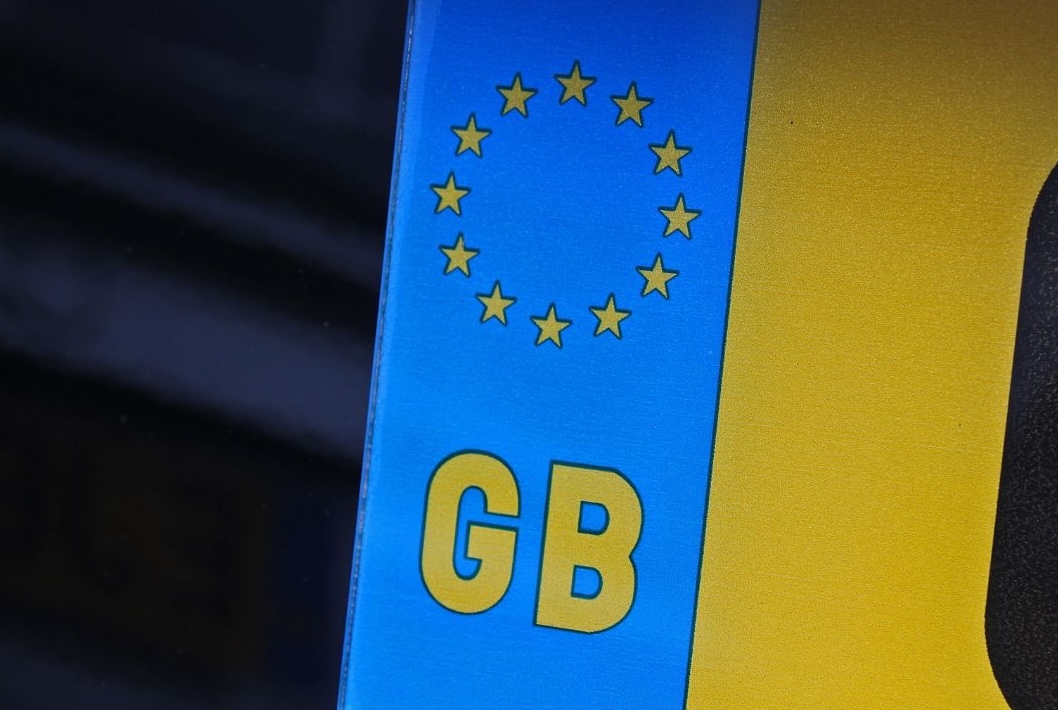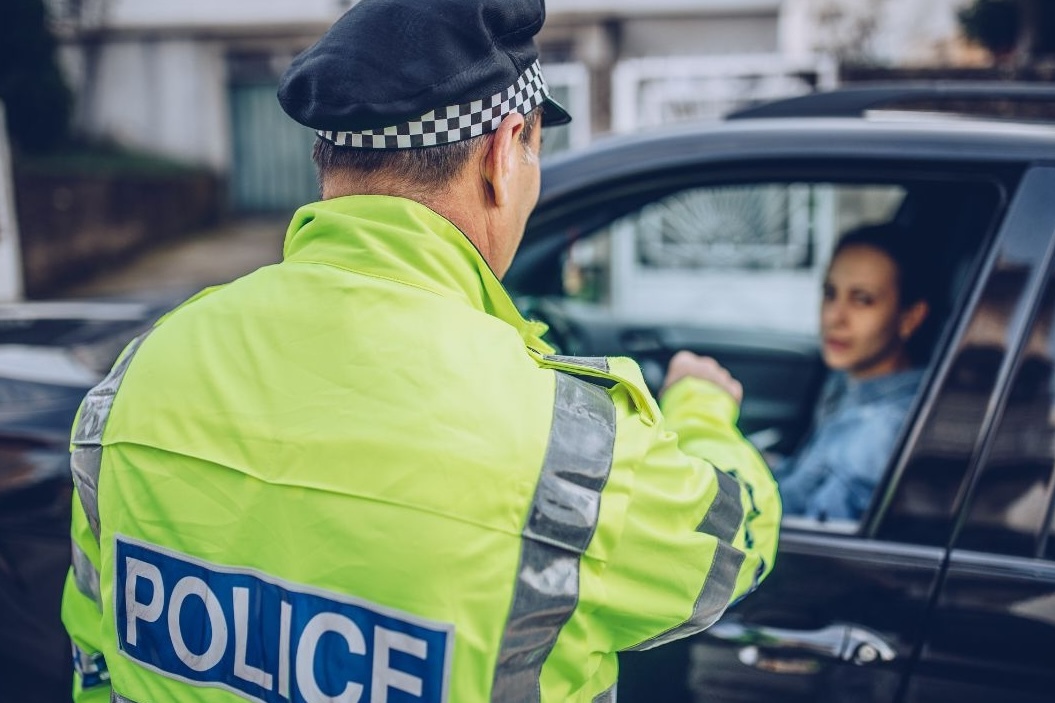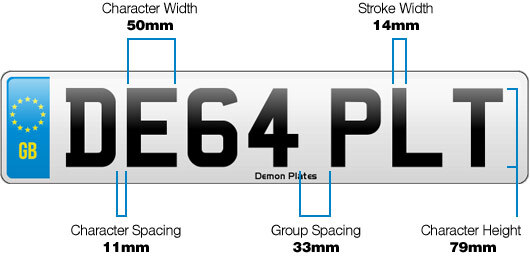In the United Kingdom, the regulations governing number plates are stringent and must be adhered to by all car owners.
Failure to comply with these laws can result in substantial fines running into thousands of pounds.
When designing a number plate, it is important to be aware of the pitfalls you can come across.
This comprehensive guide aims to provide car owners, enthusiasts, and mechanics with a detailed understanding of the legalities surrounding number plates in the UK.
From the historical evolution of number plates to the intricacies of current laws, this article is your go-to resource for everything related to number plates.
What are Number Plates?

Number plates, also commonly known as license plates, serve as distinctive identifiers for vehicles on the roads of the United Kingdom.
These plates play a crucial role in facilitating the smooth functioning of traffic management, police, and vehicle registration. The primary purpose of a number plate is to provide a unique alphanumeric code that enables easy identification of a specific vehicle.
The format of a UK legal number plate typically consists of a combination of letters and numbers arranged in a specific sequence. This alphanumeric code is not arbitrary; rather, it follows a structured pattern that conveys information about the vehicle, such as its age and origin.
At present, the alphanumeric code on a number plate is not randomly assigned. Instead, it is based on a system that indicates when the vehicle was first registered.
The first part of the code often includes letters that represent the region of registration, followed by numbers indicating the specific registration office.
The latter part may consist of a set of letters and numbers unique to the individual vehicle.
Apart from the alphanumeric code, number plates may also feature additional elements, such as symbols, flags, or national identifiers, depending on the specific regulations in place. These elements contribute to the overall design of the number plate while still adhering to the legal requirements.
Beyond their functional aspects, number plates have also become a cultural and historical reflection of the automotive landscape, evolving over the years to reflect changes in technology, design preferences, and legal plate requirements.
Understanding the significance of number plates is fundamental to appreciating their role in maintaining order on the roads of the UK.
What is the History of Number Plates in the UK?
If we go further into the history of number plates in the United Kingdom, it unveils a captivating journey that reflects the evolution of automotive technology, legal frameworks, and societal needs.
The inception of number plates can be traced back to the early 20th century, a time when the automotive industry was burgeoning, and the need for a standardised identification system became increasingly apparent.
Early Years: The Birth of Number Plates
The first-ever number plates were introduced in the UK in 1903 under the Motor Car Act. These initial plates were relatively rudimentary, featuring basic identification marks. The primary purpose was to distinguish vehicles and their owners, enabling authorities to monitor the growing number of automobiles on the roads.
The 1960s: Introduction of the Current Format
Significant changes occurred in the 1960s when the UK adopted the reflective yellow and white plates still in use today. This shift marked a pivotal moment in the history of number plates, enhancing visibility and aiding police, especially during nighttime driving.
Regional Identifiers: A Systematic Approach
As the number of vehicles continued to rise, the UK introduced regional identifiers in the form of letters at the beginning of the registration code. This addition, implemented in 1974, provided a geographical context to the registration, making it easier to trace a vehicle's origin.
Age-Related Registration: The Prefix and Suffix Systems
In 1983, the introduction of the age-related registration system brought about the use of prefixes to indicate a vehicle's age. It allowed a more intuitive understanding of when a vehicle was first registered. The subsequent suffix system, introduced in 2001, continued this practice, offering a clear visual cue to a vehicle's registration year.
The Current System: Reflecting Technological Advancements
Today's number plates in the UK integrate modern materials and technology. Reflective surfaces enhance visibility, and variations in font and number plate letter spacing contribute to the overall design. The alphanumeric code is no longer merely functional; it has become a blend of tradition and contemporary aesthetics.
Cultural and Personalisation Trends
Beyond their regulatory function, number plates have evolved into a platform for personalisation and self-expression. The option for personalised plates, introduced in the 1980s, allowed vehicle owners to add a touch of individuality to their cars within the bounds of legal guidelines.
Understanding the historical trajectory of number plates in the UK provides insight into the dynamic interplay between technological advancements, legislative changes, and societal preferences.
Today, number plates stand as more than identifiers; they embody a rich tapestry of automotive history, reflecting the ever-evolving nature of transportation in the United Kingdom.
Why do Number Plate Laws Need to be Followed?

Compliance with number plate law in the United Kingdom is not merely a bureaucratic formality; it is a fundamental aspect of responsible vehicle ownership.
The enforcement of these laws serves several crucial purposes, each contributing to the overall safety, security, and efficiency of the road network.
Understanding why number plate laws in 2024 need to be followed underlines their significance in the broader context of road management:
- Identification and Accountability: Number plates provide a unique identifier for each vehicle on the road. This identification is essential for police agencies to hold drivers accountable for their actions. In the event of a traffic violation, accident, or criminal activity, a properly registered and displayed number plate ensures that the responsible party can be quickly and accurately identified.
- Effective police: The adherence to UK number plate law facilitates efficient policing. Authorities rely on these plates to monitor traffic, identify stolen vehicles, and enforce regulations such as speed limits and parking restrictions. Without a standardised and regulated system, maintaining order on the roads would be significantly compromised.
- Enhanced Road Safety: The visibility and legibility of number plates are critical components of road safety. Regulations governing factors such as font size, spacing, and reflectivity ensure that number plates are easily readable in various conditions, including low light and adverse weather. This, in turn, aids fellow drivers, pedestrians, and police in quickly and accurately identifying vehicles, contributing to overall road safety.
- Prevention of Crime: Stolen vehicles, illegal activities, and fraud can be curtailed through strict adherence to number reg plate laws. The unique alphanumeric codes on number plates, coupled with security features, act as deterrents to criminal activities such as vehicle theft and unauthorised duplication of plates. By following these regulations, vehicle owners actively participate in the prevention of crime.
- Facilitation of Traffic Management: Number plates are integral to traffic management systems. They enable the monitoring of vehicle movements, contribute to congestion management, and assist in the planning of road infrastructure improvements. Compliance with number plate laws ensures the effectiveness of these systems, leading to smoother traffic flow and reduced congestion.
- Support for Emergency Services: In emergencies, such as accidents or medical crises, number plates play a vital role in quickly identifying and locating vehicles. Emergency services rely on accurate information provided by number plates to respond promptly and effectively, potentially saving lives and minimising damage.
- Preservation of Public Trust: The enforcement of number plate laws is a visible demonstration of the government's commitment to maintaining order on the roads. When individuals comply with these regulations, it fosters a sense of trust in the system and its ability to uphold safety standards. This trust is essential for a harmonious coexistence on the roads.
Following number plate laws is a civic responsibility extending beyond individual vehicle owners. It is a collective effort to ensure the smooth functioning of traffic systems, uphold public safety, and contribute to an environment where everyone on the road can navigate with confidence and security.
By recognising the broader societal implications, vehicle owners not only avoid legal consequences but actively participate in the creation of a safer and more efficient road network for all.
Is it Legal to Have a Personalised Number Plate?
The UK allows vehicle owners to personalise their number plates, adding a touch of individuality to their vehicles. However, this personalisation comes with specific legal guidelines that must be followed to ensure compliance. Understanding the legality of personalised number plates involves considering various factors:
- Legal Framework: The legal framework governing personalised number plates is established to strike a balance between individual expression and maintaining the integrity of the registration system. The relevant regulations ensure that the uniqueness and creativity of personalised plates do not compromise the essential functions of identification and police.
- Format Restrictions: While personalisation is encouraged, certain format restrictions must be observed. The alphanumeric code must adhere to specific combinations and not include misleading or offensive content. It ensures that personalised plates remain within the bounds of societal norms and do not create confusion or controversy.
- Font and Size Guidelines: The font and size of characters on personalised plates are regulated to maintain visibility and legibility. It ensures that even with personalised elements, the number plate remains easily readable by police and fellow road users.
- Security Markings: Personalised plates may still be required to include specific security markings to prevent counterfeiting or unauthorised duplication. These markings contribute to the overall security of the registration system.
- Exemptions and Special Characters: Some exemptions may allow certain special characters or symbols, adding a layer of personalisation. However, these must still align with the guidelines set by the Driver and Vehicle Licensing Agency (DVLA) to ensure legality.
- Registration Process: The process of acquiring a personalised number plate involves registering the unique combination with the DVLA. This registration ensures that the personalised plate is officially recognised, and the owner receives the necessary documentation.
- Transfer Regulations: In cases where vehicle ownership changes, there are specific regulations for transferring personalised number plates. Understanding these regulations is crucial to ensure a smooth transition of the personalised plate to the new owner.
By adhering to these legal guidelines, vehicle owners can enjoy the freedom of personalising their number plates without running afoul of the law. Personalised plates not only provide a unique aesthetic touch but also allow individuals to showcase their interests, names, or creative expressions on their vehicles.
It's important for vehicle owners considering personalised plates to familiarise themselves with the specific regulations governing these plates. It ensures that the personalisation process is not only a creative endeavour but also a legally sound one, contributing to a harmonious balance between individual expression and the broader framework of registration standards in the UK.
Number Plate Rules to Follow in the UK

Colours of Number Plates
- Standardisation: Number plates in the UK come in distinctive colours for different vehicle categories. Understanding these number plate colours is crucial:
- White/yellow plates: Standard for most vehicles.
- Green plates: Reserved for electric and plug-in hybrid vehicles, promoting environmental awareness.
Number Plate Fonts
- Approved Fonts: The font used on number plates must adhere to specific guidelines to ensure readability. Approved fonts include Charles Wright, Charles Wright Bold, and mandatory font for motorcycles.
Background of Number Plate
- Design Restrictions: The design of the number plate, including any decorative elements, must comply with regulations. Ensuring that the background does not interfere with the visibility of the alphanumeric code is essential.
Reflectivity
- Visibility at Night: Number plates must be reflective to enhance visibility during low-light conditions. This feature contributes significantly to road safety, allowing for easier identification of vehicles.
Number Plate Material
- Durable Materials: Number plates must be made of materials which ensure durability and legibility over time. Common materials include acrylic and reflective materials that meet the correct standards for what is a reflective number plate.
Security Markings
- Counterfeit Prevention: To prevent counterfeiting and unauthorised duplication, number plates may feature specific security markings. Understanding these markings is crucial to ensure the authenticity of the plate.
Proper Placement
- Visibility Considerations: Number plates must be correctly positioned on the vehicle to ensure optimal visibility. UK number plate position laws dictate the precise location of both the front and rear of the vehicle.
Number Plate Borders
- Aesthetic Constraints: While decorative borders are allowed, they must adhere to specific dimensions and designs. Understanding the permissible borders ensures compliance with the regulations.
Flags and National Identifiers
- Regulated Display: If displaying flags or national identifiers, it must be done within the specified guidelines. Certain restrictions govern the size and placement of these elements on the number plate.
What makes a Number Plate Illegal in the UK?
Understanding what renders a number plate illegal is essential to avoid penalties and fines. Here are common violations to be aware of:
Random Symbols
- Alphanumeric Code Integrity: The alphanumeric code must consist of approved characters. The inclusion of random symbols or characters not meeting regulatory standards renders the plate illegal.
Dirty Number Plates
- Maintaining Visibility: Number plates must be kept clean to ensure optimal visibility. Dirty or obscured plates can lead to fines, impacting both safety and legal compliance.
Incorrect Spacing
- Legible Formatting: The spacing between characters must adhere to specific guidelines. Incorrect spacing can make the plate difficult to read and is a violation of laws on number plate spacing.
Tint Misuse
- Visibility Concerns: Tinted covers or materials that hinder the visibility of the alphanumeric code are strictly prohibited.
Use of Blue Letters
- Font Colour Restrictions: The use of blue letters is not permitted on standard number plates. Understanding colour restrictions ensures compliance.
Removable Lettering
- Permanent Fixing: Number plates must be affixed permanently to the vehicle. Any attempt to use removable lettering or plates is against regulations.
Reflective Lettering
- Non-Reflective Elements: Regulations mandate that alphanumeric codes must maintain visibility. Adding non-reflective elements to the code violates these regulations and can compromise visibility.
Fasteners Affecting the Appearance of Lettering
- Secure Affixing: Fasteners or accessories must not obstruct or alter the appearance of the alphanumeric code. Proper affixing ensures clarity and compliance.
How Should You Display Number Plates?
Ensuring that number plates are displayed correctly is vital for both legal compliance and road safety. Here's a step-by-step guide on how to display number plates properly:
- Secure Affixing: Use approved fixings to secure the number plate firmly to the vehicle.
- Proper Positioning: Follow guidelines for the correct placement of number plates on the front and rear of the vehicle. It’s vital to remember both front number plate law and rear number plate law.
- Vertical Alignment: Ensure the number plate is vertically aligned, providing a neat and easily readable appearance.
What are the Required Components of a Number Plate?
Number plates consist of specific components that must be present and legible. Understanding these components ensures compliance:
- Alphanumeric Code: The unique combination of letters and numbers assigned to the vehicle.
- Region Identifier: The letters indicating the region of registration.
- Registration Office Code: Numeric digits identifying the specific registration office.
- British Standard Mark: Ensures that the number plate complies with the required standards.
Number Plate Laws for Motorbikes
Motorbike owners must adhere to specific regulations regarding number plates. Key considerations include:
- Size Requirements: Motorbike number plates must conform to specified dimensions.
- Visibility: Ensure that the number plate is clearly visible from both the front and rear of the motorcycle.
Number Plate Laws when Towing

When towing a trailer, additional considerations come into play. Follow these guidelines:
- Additional Plate: If the trailer obscures the rear number plate, an additional plate must be affixed to the trailer.
Allowances for Historic Vehicles
Historic vehicles may have exemptions from certain regulations. Understanding the allowances for vehicles with historical significance ensures compliance without compromising the integrity of the vehicle's heritage.
Illegal Number Plates
Understanding the consequences of using illegal number plates is crucial. Consequences may include fines, penalties, and potential legal issues. Ensure that your number plates comply with all regulations to avoid these complications.
Are 4D Number Plates Legal in the UK?
The legality of 4D number plates, sometimes known as “ghost plates”, on cars in the UK can be confusing. The question of “Are ghost plates legal? is one often asked of us.
While it is not against the law to have raised letters on a number plate, you want to make sure you don’t want a run-in with the wrong side of the law.
Although having a 4D plate itself is not illegal, it becomes a legal concern if the raised letters make the plate unreadable, as this is against regulations stipulating that number plates must be easily readable, especially from various angles.
Number Plate Rule Changes in the UK
Staying informed about any changes to number plate rules is essential for all vehicle owners. Keep up to date with any changes in rules through DVLA, or speak with us here at Demon Plates and we’ll be happy to help.
Ensuring Compliance and Purchasing Legal Number Plates
Demon Plates takes pride in exclusively offering road-legal number plates. Nevertheless, many individuals may be uncertain about the criteria that define a legal registration plate and the potential consequences of using a low-cost plate from online platforms like eBay and other websites, which could result in fines and MOT failures.
To ensure clarity on what constitutes a legal number plate and to guide you in making informed choices, we adhere to a comprehensive checklist while crafting your plates through our online plate builder.
To design and purchase UK legal number plates, visit our Demon Plates Plate Builder. This online tool allows you to create personalised plates while ensuring adherence to all legal requirements. For additional guidance and information, feel free to contact us.
